Breaking News
Lockheed Martin delivers 4,600th F-16 Fighting Falcon fighter jet during 50th year celebration.
On July 20, 2024, Lockheed Martin announced the delivery of the 4,600th F-16 Fighting Falcon at the British Royal International Air Tattoo (RIAT) 2024. This milestone coincided with the celebration of 50 years of the F-16 at the RIAT, which featured 28 F-16s from 11 countries and a special commemorative scheme.
Follow Army Recognition on Google News at this link
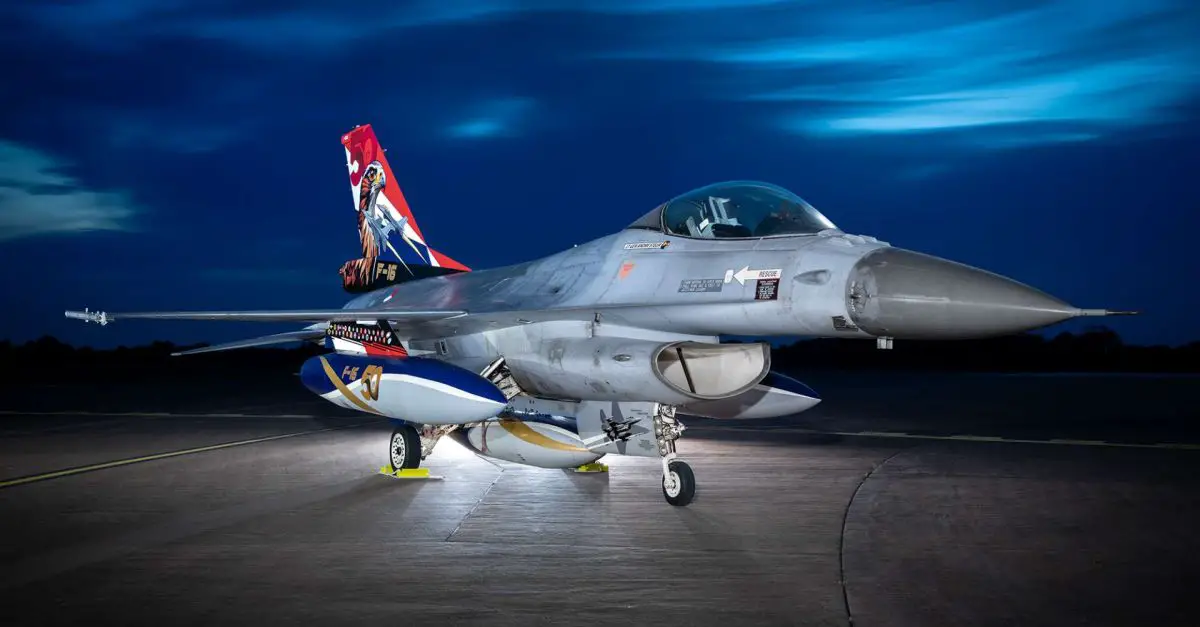
Lockheed Martin announced the delivery of the 4,600th F-16 Fighting Falcon at RIAT 2024, coinciding with the 50th anniversary celebration featuring one F-16 with a special commemorative scheme. (Picture source: Royal International Air Tattoo)
The General Dynamics F-16 Fighting Falcon has a long history, beginning with its first flight on January 20, 1974. It was conceived in response to the need for a highly maneuverable, lightweight fighter capable of achieving air superiority. This need arose from lessons learned during the Vietnam War. The Lightweight Fighter (LWF) program, which began in the early 1970s, saw the Fighter Mafia group, including Colonel John Boyd, develop the F-16 based on the energy–maneuverability theory, emphasizing a high thrust-to-weight ratio and minimal energy loss during maneuvers.
Seeking to develop a cost-effective and high-performance fighter to complement the more expensive F-15 Eagle, the LWF program finally selected General Dynamics' Model 401 (YF-16) and Northrop's P-600 (YF-17) for prototype development. General Dynamics' YF-16 prototype was selected over Northrop's YF-17 after a rigorous fly-off competition, as the YF-16 demonstrated superior agility, lower operating costs, and better range. The first production models were delivered to the USAF in 1978, and the aircraft quickly gained a reputation for its performance and versatility. This paved the way for the F-16's later widespread adoption and subsequent upgrades.
Key features of the F-16 include a frameless bubble canopy for superior cockpit visibility, a side-mounted control stick for improved maneuvering, and a reclined ejection seat to mitigate g-forces on the pilot. The F-16 also pioneered the use of a relaxed static stability/fly-by-wire flight control system, enhancing its agility. Armed with an internal M61 Vulcan cannon and 11 hardpoints for various weapons and equipment, the F-16 remains prominent in global air forces.
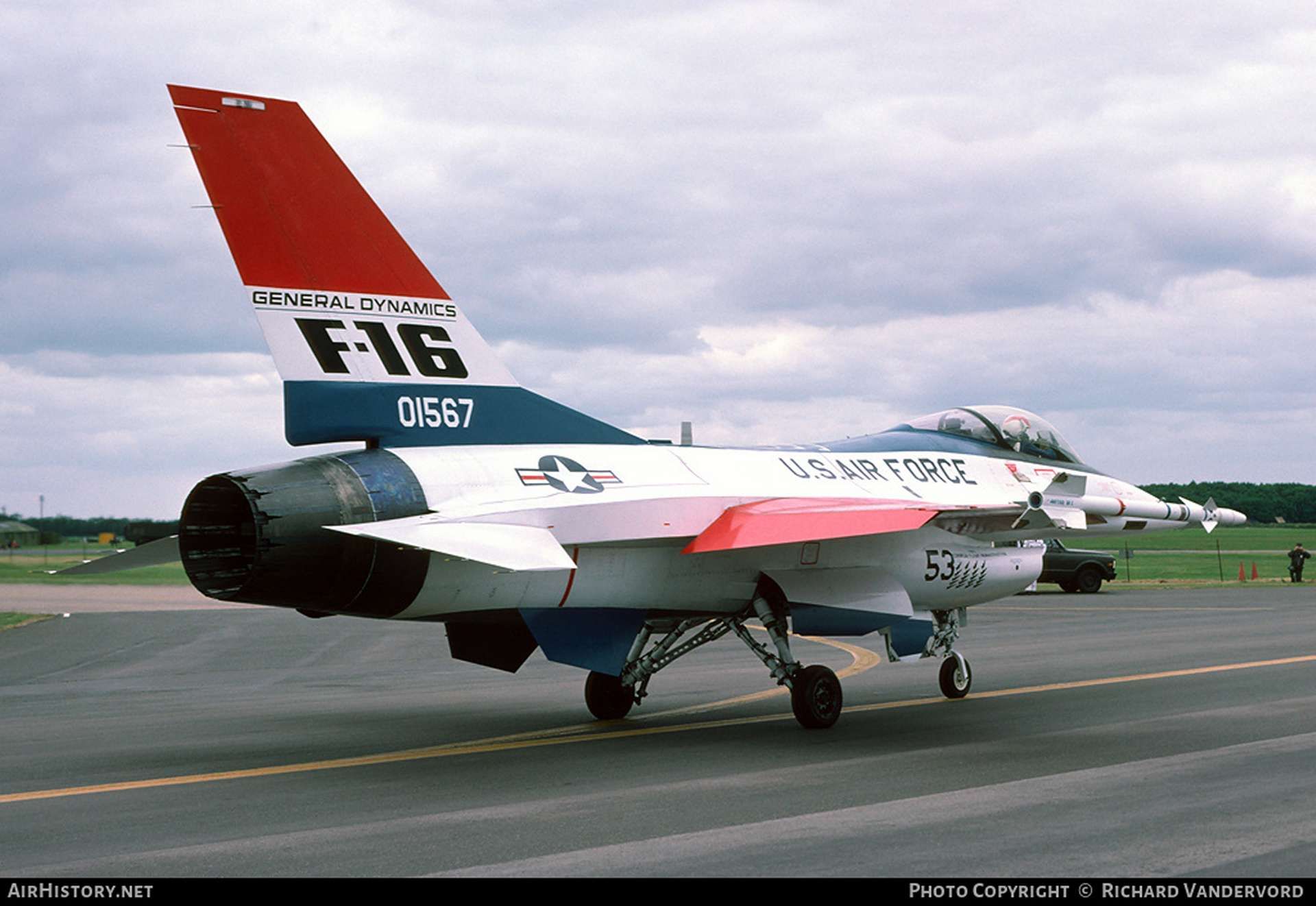
General Dynamics' YF-16 prototype was selected over Northrop's YF-17 after a rigorous fly-off competition, as the YF-16 demonstrated superior agility, lower operating costs, and better range. (Picture source: AirHistory/Richard Vandervord)
Since its first flight on January 20, 1974, and its official introduction on August 17, 1978, over 4,600 units have been built. In this story, Lockheed Martin's involvement with the F-16 began in 1993 when it acquired General Dynamics' aircraft manufacturing business, integrating it into Lockheed Martin after merging with Martin Marietta in 1995. While the USAF no longer purchases new F-16s, upgraded versions continue to be produced for export, as the Fighting Falcon has undergone numerous improvements and upgrades. For instance, the Multinational Staged Improvement Program (MSIP) enhanced the aircraft's capabilities through various stages, ensuring its relevance in modern combat, and recent upgrades include advanced avionics, enhanced radar systems, and improved ground collision avoidance systems.
Over the years, the F-16 has seen numerous variants, each tailored to specific operational requirements and incorporating advancements in technology. The F-16A/B models were the initial production variants, with the F-16A being a single-seat version and the F-16B a two-seat version primarily for training. The Block 15 was a significant upgrade, featuring larger horizontal stabilizers for improved maneuverability. The F-16C/D models introduced in the mid-1980s brought further enhancements, including improved radar systems, all-weather capability, and compatibility with advanced air-to-air missiles. The Block 30/32, 40/42, and 50/52 variants saw incremental improvements in avionics, weapons systems, and engines, making the F-16C/D a highly capable multirole fighter.
Another notable variant is the F-16E/F, also known as the Block 60, developed for the United Arab Emirates. This version features conformal fuel tanks for extended range, an AN/APG-80 AESA radar, and more powerful engines. The F-16V, or Block 70/72, is the latest variant, equipped with advanced avionics, a new mission computer, and an APG-83 AESA radar. This variant also includes an automated ground collision avoidance system, significantly enhancing pilot safety and aircraft survivability. The versatility of the F-16 platform has allowed it to adapt to various roles, from air superiority and ground attack to reconnaissance and electronic warfare.
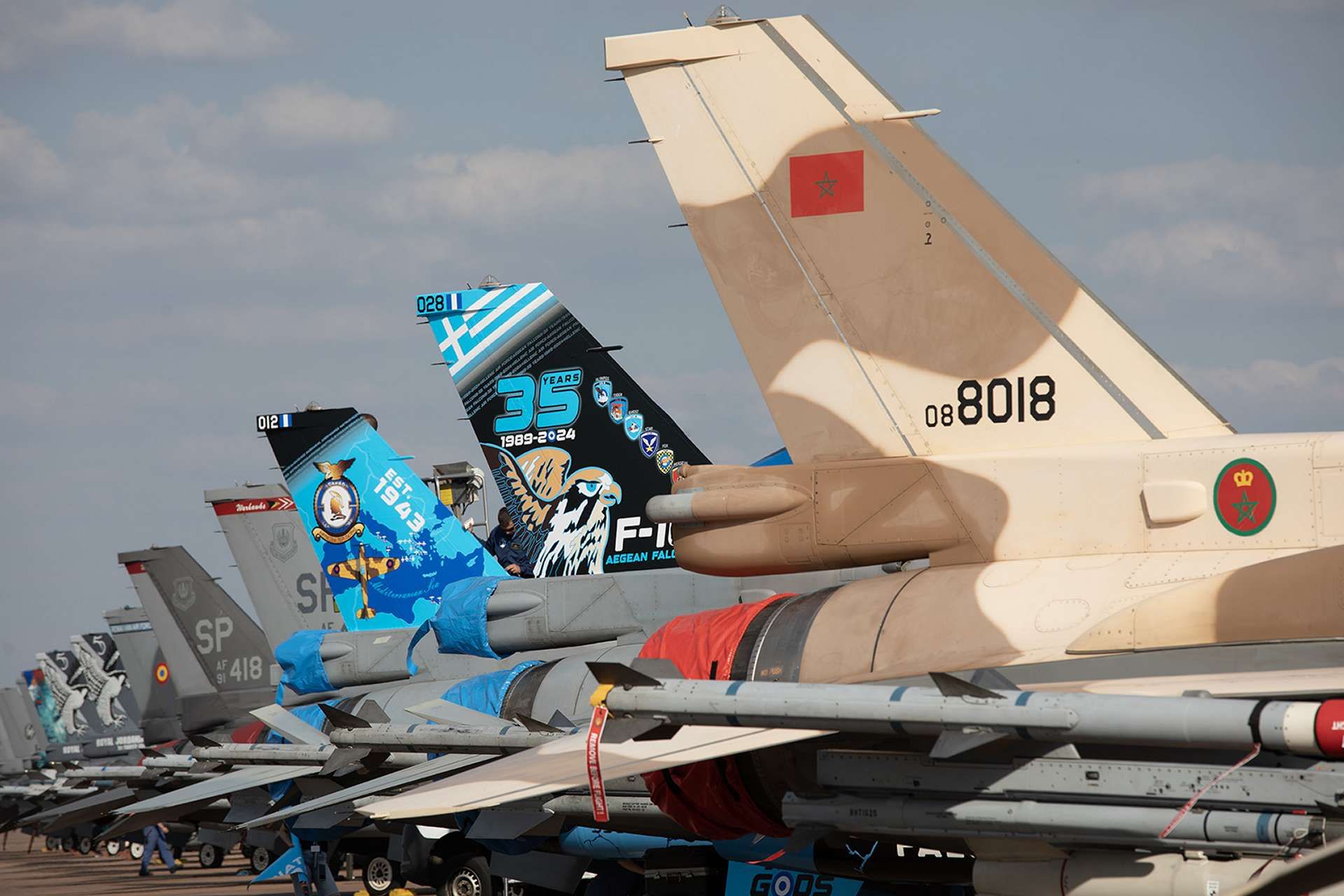
The F-16 is operated by 25 countries, making it one of the most widely used fighter aircraft in the world. Key operators include the United States, Israel, Belgium, Turkey, and Pakistan, while Ukraine and Argentina will soon receive theirs. (Picture source: Twitter/Tony Osborne)
The F-16 has an extensive combat record, used in conflicts worldwide. The Israeli Air Force (IAF) achieved the F-16's first air-to-air kill in 1981 and later used the aircraft in Operation Opera to strike an Iraqi nuclear reactor. During the 1982 Lebanon War, Israeli F-16s were credited with 44 air-to-air kills. The USAF deployed F-16s during Operation Desert Storm, performing various missions, including air superiority, ground attack, and close air support. F-16s have also seen action in the Balkans, Afghanistan, Iraq, and Libya, demonstrating their versatility and effectiveness in various combat scenarios. The aircraft's agility, advanced avionics, and robust weapons systems have made it a preferred choice for many air forces worldwide, as the F-16 can effectively perform air superiority, interdiction, and close air support roles.
The F-16 is operated by 25 countries, making it one of the most widely used fighter aircraft globally. Key operators include the United States, Israel, Turkey, and Pakistan. The United States Air Force (USAF) has employed the F-16 in various roles, from air combat to ground attack missions. Israel has utilized the F-16 extensively, achieving numerous air-to-air kills and conducting high-profile operations. Turkey has used its F-16s in both regional conflicts and NATO missions, while Pakistan's F-16s have been active in air defense and counterinsurgency operations. European countries such as Belgium, the Netherlands, Denmark, and Norway have also integrated the F-16 into their air forces, participating in NATO missions and international operations.
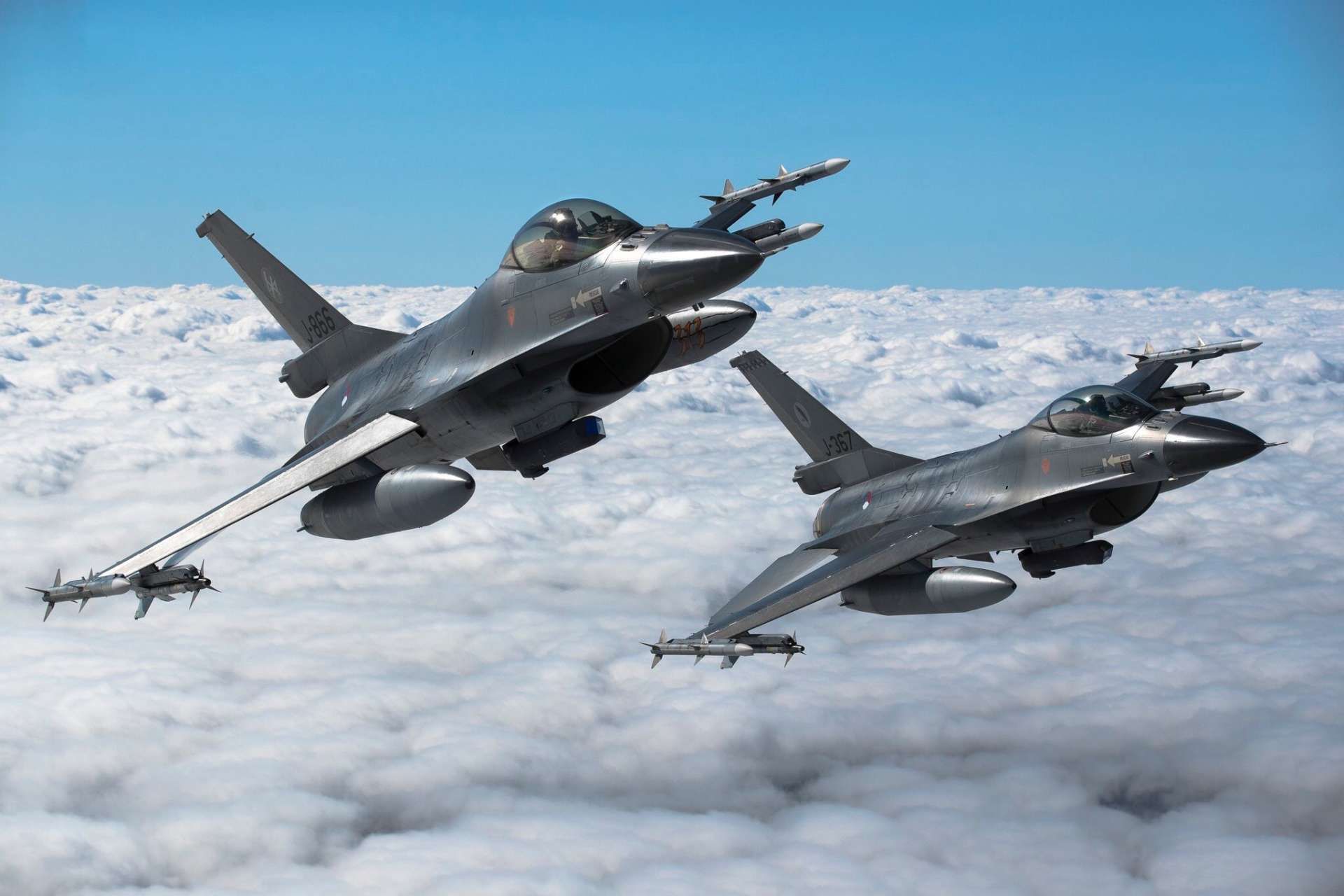
The F-16 is powered by a single engine, with variants using either the Pratt & Whitney F100 or General Electric F110 engines, capable of generating over 13,154 kilograms (29,000 pounds) of thrust with an afterburner, which allows the Fighting Falcon to reach speeds of over Mach 2 and operate at altitudes up to 15,240 meters (50,000 feet). (Picture source: Belgian Air Force)
The F-16 Fighting Falcon, a single-engine supersonic multirole fighter aircraft, has a length of 15.06 meters, a wingspan of 9.96 meters, and a height of 4.88 meters. It has a maximum takeoff weight of 19,187 kilograms and can carry up to 7,711 kilograms of external stores, including missiles, bombs, and fuel tanks. The F-16 is powered by a single engine, with variants using either the Pratt & Whitney F100 or General Electric F110 engines, capable of generating over 13,154 kilograms (29,000 pounds) of thrust with an afterburner. This power allows the F-16 to reach speeds of over Mach 2 and operate at altitudes up to 15,240 meters (50,000 feet).
The aircraft's avionics suite includes an AN/APG-68 radar, providing capabilities for air-to-air and air-to-ground missions. Advanced variants feature the AN/APG-83 AESA radar, offering improved target detection and tracking. The F-16 is equipped with a head-up display (HUD), multi-function displays (MFDs), and hands-on throttle-and-stick (HOTAS) controls, ensuring superior situational awareness and ease of operation for the pilot. The F-16's combat range varies depending on the mission profile, with a typical combat radius of around 340 miles and a ferry range exceeding 2,000 miles with external fuel tanks.
The F-16 Fighting Falcon is equipped with a versatile array of weaponry, making it effective in various combat scenarios. Its primary internal weapon is the M61A1 Vulcan, a 20mm multi-barrel rotary cannon. Externally, the F-16 features 11 hardpoints capable of carrying a wide variety of ordnance, including air-to-air missiles like the AIM-9 Sidewinder and AIM-120 AMRAAM, and air-to-ground munitions such as the GBU-12 Paveway II laser-guided bomb and the AGM-65 Maverick missile. It also supports the Joint Direct Attack Munition (JDAM) system for all-weather precision bombing. The AGM-84 Harpoon provides anti-ship capabilities, and the F-16 can carry unguided bombs and rockets for close air support and suppression of enemy air defenses.
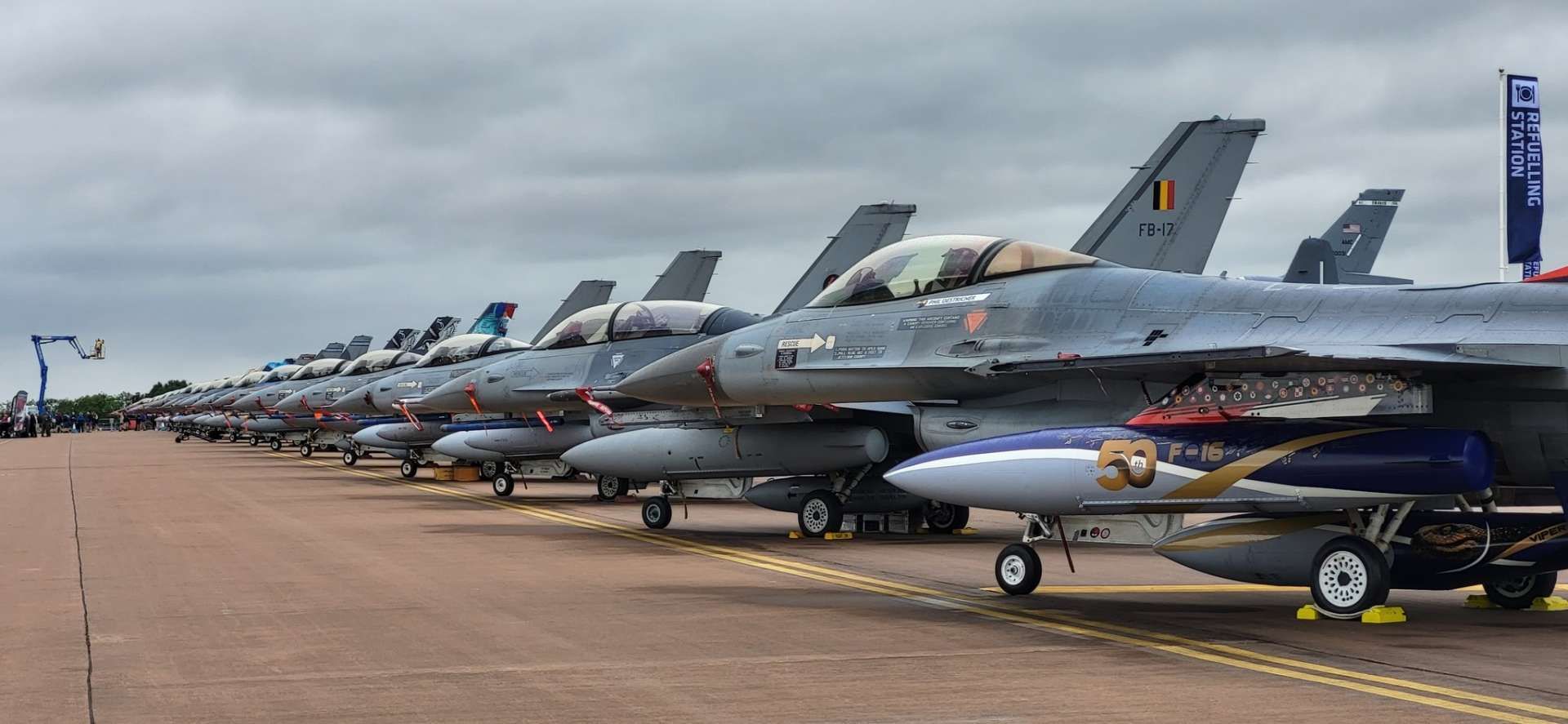
The aircraft's agility, advanced avionics, and robust weapons systems have made it a preferred choice for many air forces worldwide, as the F-16 can effectively perform air superiority, interdiction, and close air support roles. (Picture source: Twitter/@KyleS1706)


























